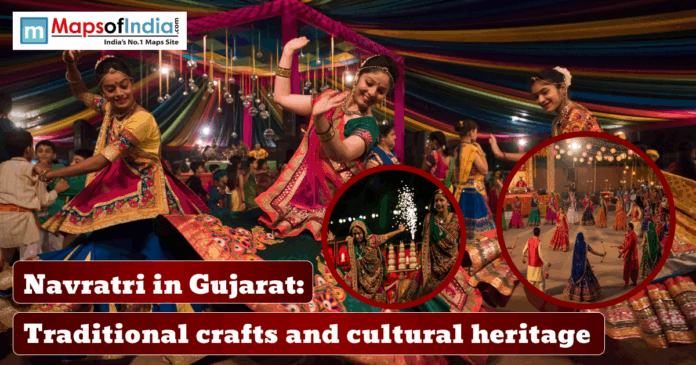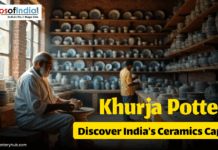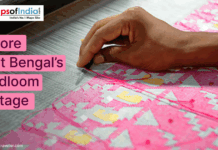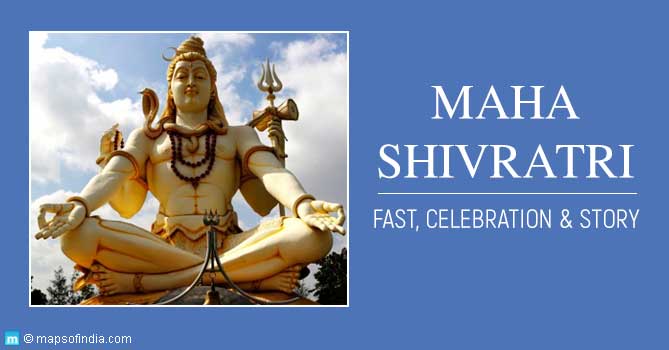The festival of love and arts
Navratri, which started in Gujarat. This festival is celebrated by Indians across the world. This festival is celebrated across the world and is known for being a vibrant and colourful festival. This festival is celebrated to show their devotion toward Goddess Durga. She was one of the nine divine Incarnations. This festival is filled with Devotion for the goddess. The music and dance of garba are done across India. This is a colourful festival, this is a time of celebration and every night it’s a real colour, culture, and craftsmanship.
The spirit of Navratri in Gujarat
The festival of Navratri is celebrated for ten days and nine nights. This festival is observed with immense vigour in the villages and cities in the state of Gujarat. Coloured traditional attire and garba and dandiya raas are observed in people. Temples and houses are adorned elaborately in order to celebrate the goddess.
The cultural identity of Garba
Garba is the centre of Navratri festivities. It is an old-fashioned folk dance done in circles near the light or picture of the goddess. The music and movements give it a religious and celebratory atmosphere. The circle serves to indicate the circle of life and the cosmic beat of creation.
Dandiya Raas and its vibrant tradition
One of the major dances done during the festival of Navratri is Dandiya Raas. To perform this dance, you use colourful sticks, which are called dandiyas. This dandiya can be seen as the representation of Goddess Durga’s swords. This form of dance is energetic and mostly performed in groups. This aspect of dance shows the aspect of togetherness and jubilation. The drum beats along with the folk song score give it an unbeatable memory.
Traditional clothing and bright textiles
The celebration brings out the textile culture of Gujarat in all its colourful clothing. Females look up in chaniya cholis with mirror stitching, bead work, and thread embroidery. Males wear kediyu with dhotis and turbans. The mirror work and intricate embroidery showcase the ingenuity of local craftsmen.
Mirror work stitching of Kutch
Abhla Bharat, or mirror work, is one of the most well-known Gujarati art forms. It is quite popular in Navratri clothing and home decor. The mirrors are embedded in colourful cloth with the aid of silk or cotton threads so that the effect shines under the festivity lights.
Bandhani tie and dye art
Bandhani or Bandhej is an age-old tie and dye method followed in Gujarat. The cloth is bound with fine threads prior to dyeing in order to create patterns. During the time of Navratri, the importance of Bandhani dupattas and turbans becomes significant, making them a sign of culture and pride.
Clay idols and temple art
Potters have a significant importance during the festival of Navratri. Various potters across the nation create Goddess Durga’s idols. These clay idols are worshipped and are installed in temples and public places. The idols are decoratively coloured with vivid colours and jewellery. The art of the idols signifies immense devotion and craftsmanship.
The role of the community in celebration
The role of communities is really important during the time of festivals like Navratri. This dance is mostly performed in a group. It’s a people’s event. In various parts of indian communities, the event of garbha is held together. The festival of Navratri helps to promote bonding between communities and maintain classical art forms.
Handmade decoration and winter markets
Navratri markets turn into a showcase of Gujarat’s craft culture. Crafted diyas with paint work, embroidered torans, clay vigrams, and wall hangings decorate the markets. They all embellish houses and temples. Every craft signifies the innovative power of rural Gujarat.
The art of old shoemakers
Mojaris and juttis are classic leather shoes commonly used during Navratri. They are designed uniquely by professional artists with embroidery, beading, and threadwork. The bright designs go well with the festive clothing.
Terracotta art and pottery
The importance of Terracotta art and pottery increases significantly during the time of the Navratri festivals. There are various crafts created during the time of Navaratri, like lamp decoration, clay pots, and clay idols. The use of natural clay to make these items adds warmth and purity to the event with its earthy colour and intricate patterns.
The symbolism of colours
During the time of Navaratri, there are different colours worn on different days for the nine days of the festival. Each colour has its own cultural significance. The devotees wear clothing with the colour of the week. The colours indicate purity, power, prosperity, and positive vibes. The bright colours give the festival the joy and peace it requires.
Wall paintings and folk art
Gujarati paintings like Pithora and Rogan hold a prominent position during holidays. They are applied to houses and public halls for decoration purposes. They contain mythological scenes, natural episodes, and scenes of everyday life. They contain natural colour and symbolic motifs that distinguish them.
The economic relevance of Navratri handicrafts
Navratri is the major earnings of the artisans, musicians, and small shops. During the time of the festival, markets of handicrafts, textiles, and jewellery fairs flourish across the nation. Not only does the festival conserve the culture, but it also promotes the economy.
The worldwide splendour of Gujarat’s Navratri
Navratri is celebrated today all across the world among the Gujarati diaspora. This festival is celebrated across the world by Indians living across the world. The dance, music, and crafts take the flavour of Gujarat on international platforms and introduce the living heritage of India.
Saving the past by innovative methods
Although new styles have entered the Navratri market, the flavour of old craftsmanship is predominant. Old methods are being re-created by young designers and adapted into new-age fashion. This infusion of the old with the new helps keep the soul of Gujarat’s culture alive.
Conclusion
The festival of Navratri is really big in the state of Gujarat. This festival is a celebration of dance, music and colour. This festival is seen as the celebration of faith, dance, and craftsmanship in the state of Gujarat. From the small things that are observed during these nine days of the festival, each has a centuries-old history. The festival has more importance than just showing devotion toward Goddess Durga. This festival is about celebrating the spirit of creativity and the collective joy of the people in communities. It is also a living example of how art and religion converge to form the cultural character of Gujarat.





